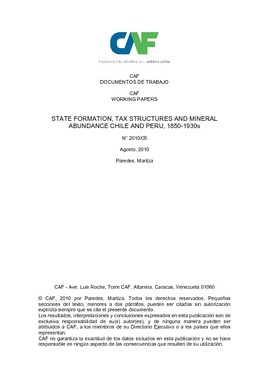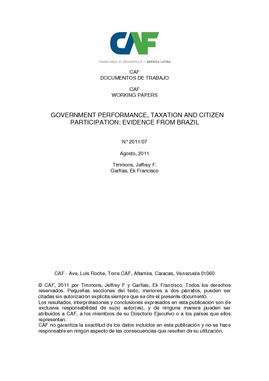State formation, tax structures and mineral abundance Chile and Peru, 1850-1930s
Resumen
The paper assesses the impact of natural resource abundance on state formation by looking at how tax structures responded to booming periods in the early ages of the Chilean and Peruvian republic, 1850-1930s. The paper inquires whether these early booming periods impacted on the structure of fiscal revenues, and finally, on the development of the state.
Materia
Fecha
2010Citar de esta publicación
Item perteneciente a la Colección
Autor
Paredes, MaritzaItems Relacionados
DIGintegrity. Digitally transforming the fight against corruption
The well-known and unprecedented corruption scandals that occurred in Latin America during the last decade suggest that the region faces a phenomenon ...
Government performance, taxation and citizen participation: evidence from Brazil
Fiscal contract theories of the state hypothesize that government performance affects tax collection and that institutions that foster representation ...
Just Energy Transition / Scenarios Brazil
The energy transition is a key challenge for Brazil, a country with vast energy resources and a strategic role in the global climate agenda. This report ...





